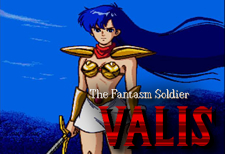In the days before Street Fighter II, developers seemed to be struggling with the fighting genre. There were more misses than hits, and few games offered something new and original. Atari’s Pit-Fighter tried to change all that, with its digitized graphics and brutal underground brawling. It was eventually ported to a myriad of consoles, and we have a full review of the Genesis version for you, so grab a bat and some brass knuckles and have a gander.
Tag: 1991
El Viento
Wolf Team was on fire during the 16-bit era, producing several Genesis titles that varied from mediocre to excellent (depending on who you ask). One thing the group liked to do was create action games, and a fan favorite of the genre is Wolf Team’s El Viento. Spanish for “the wind,” the game tells the odd tale of a young girl out to stop the resurrection of an ancient demon in New York City.
Jewel Master
Action games are a dime a dozen, but sometimes a few come up with an interesting idea. Sega’s Jewel Master tries something new by putting the weapons system into two handfuls of rings, each with its own power. These magical rings can be combined for all sorts of neat power, and though the game didn’t fufill its potential as hoped, it was still a fun little romp that deserves to be checked out.
Valis: The Fantasm Soldier
For almost two decades, the Valis franchise has been turning heads, be it for its solid action, incredible cut scenes, or even its recent foray into the world of hentai. All of this controversy had to begin somewhere, and Sega-16 takes a look at the game that started the famous storyline, Valis: the Fantasm Soldier. It may not stack up to its Turbo Grafx-16 CD-ROM counterpart, but Genesis gamers didn’t get off all that bad.
Marvel Land
Longing to get out from under Nintendo’s brutal licensing contract, Namco finally managed to release a few gems early on for the Genesis. One of those first games was Marvel Land, a cutesy platformer that did a decent job of emulating its arcade sibling. Our full review has all the details, so read on and see where the Sega/Namco collaboration got its roots.





